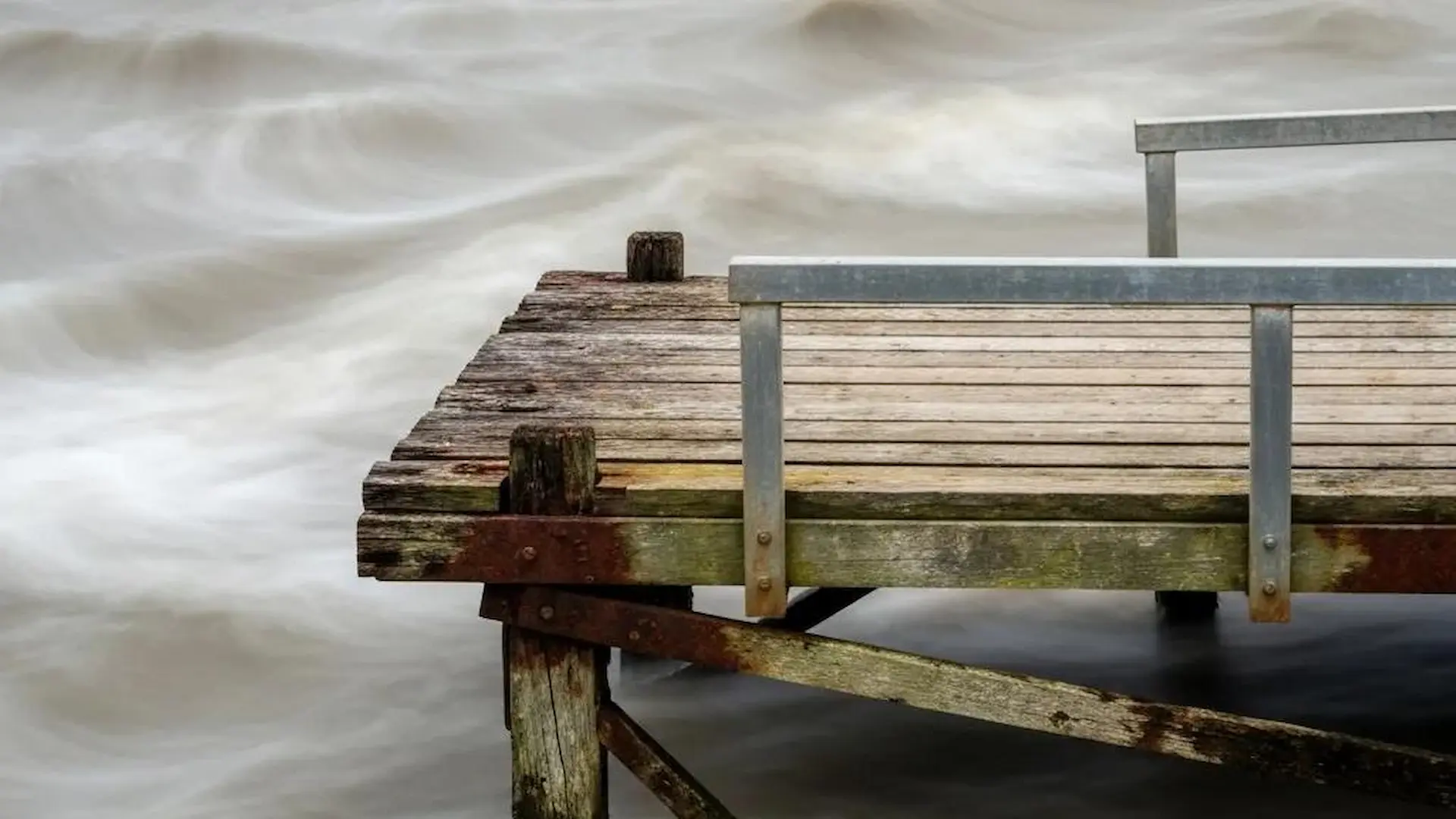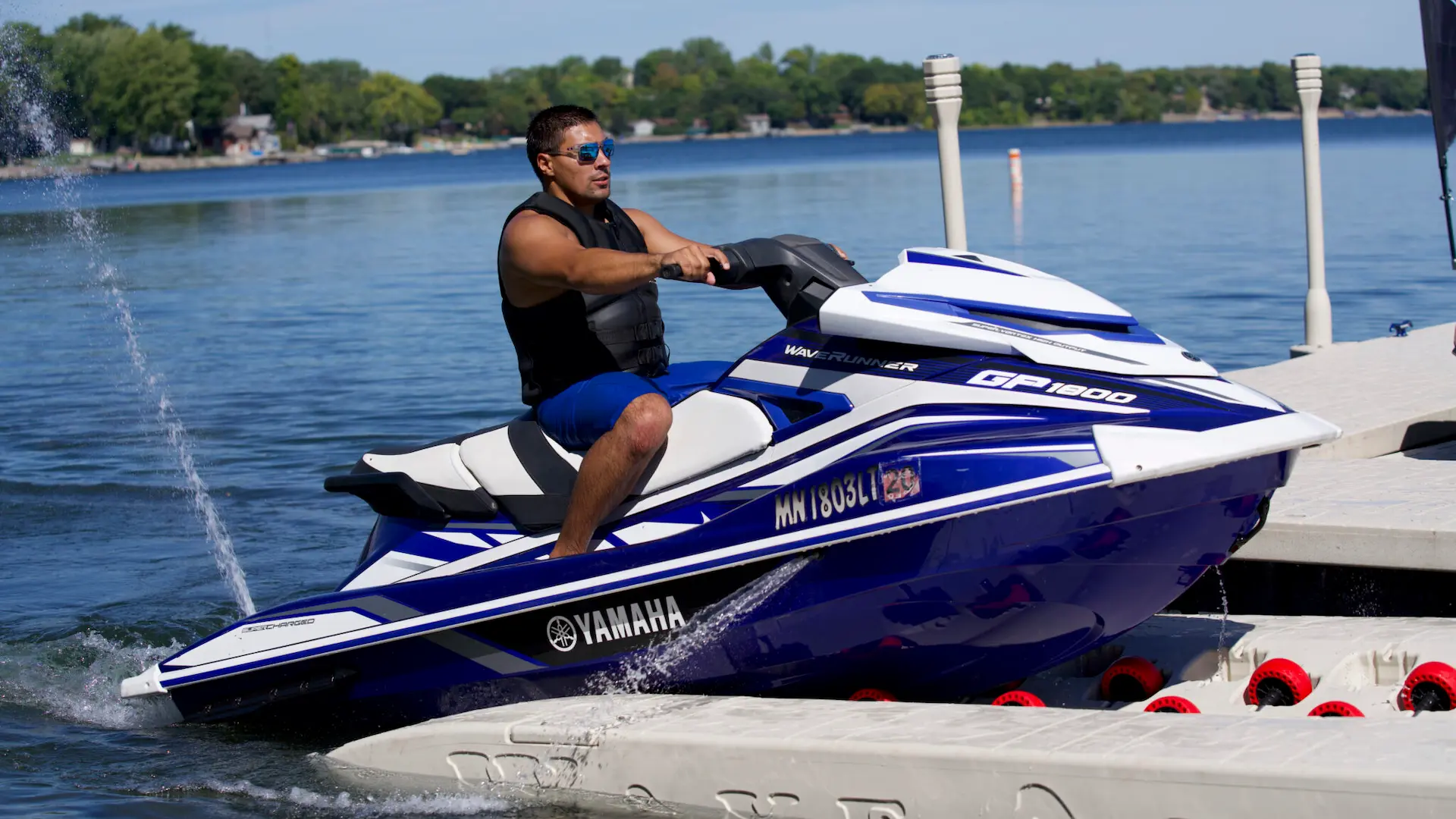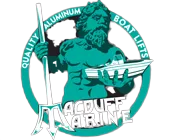Choosing the right dock can transform waterfront living in Cape Coral, Fort Myers, and beyond by ensuring durability, low upkeep, safety, and seamless boat or Jet Ski access. Waterfront owners face challenges with wood rot, metal corrosion, fluctuating water heights, and complex permitting—problems solved by Wave Armor’s modular polyethylene systems. This guide explores:
- Traditional dock limitations and construction methods
- The modern advantages of Wave Armor floating docks
- Durability and longevity comparisons
- Maintenance requirements and cost savings
- Installation, customization, and local support
- Safety and user-experience enhancements
- Brand-to-brand material and scalability contrasts
- Environmental and regional benefits
- A clear call to action for professional installation
By mapping these themes, you can make an informed decision that enhances waterfront enjoyment and protects your investment.
What Are Traditional Docks and Their Common Limitations?

Traditional fixed docks are rigid structures anchored by pilings to maintain constant height above the water. They rely on wood, aluminum, or concrete components, but these materials and methods expose dock owners to persistent issues and rising upkeep costs.
How Are Traditional Fixed Docks Constructed and What Materials Are Used?
Fixed docks are built by driving pilings into the seabed and fastening decks, joists, and railings atop these supports.
- Timber decks often use pressure-treated pine or tropical hardwoods.
- Metal docks feature aluminum framing with composite or wood boards.
- Concrete docks incorporate precast panels on shore-set pilings.
Each material choice defines weight, appearance, and expected lifespan, yet the rigidity of piling foundations limits adaptability as water levels change.
What Maintenance Challenges Do Wood and Aluminum Docks Present?
Wood and aluminum docks demand significant annual care to prevent decay and structural damage.
- Annual sealing, staining, and UV protection for timber planks to slow rot and warping
- Rust‐inhibiting coatings and bolt tightening for aluminum frames to prevent corrosion
- Frequent board replacement or sanding to address splintering and surface wear
How Do Fixed Docks Perform with Fluctuating Water Levels in Florida?
Fixed structures remain at a set elevation and cannot adjust to tidal shifts or storm surges. During unusually low tides, boarding can become awkward or unsafe, while high tides may flood the deck surface, increasing slip hazards. These height mismatches often require design compromises or supplemental steps that detract from seamless waterfront access.
What Are the Installation and Permitting Difficulties of Traditional Docks?
Constructing a piling-based dock involves heavy equipment, precise surveying, and multi-agency approvals.
- Shoreline surveys and geotechnical tests for piling placement
- Permits from county environmental and water management districts
- Coordination with marine contractors for crane or barge operations
- Potential for delays due to local regulations or endangered species protections
This complexity can extend lead times by months and inflate project budgets.
What Makes Wave Armor Floating Docks a Modern Solution?
Wave Armor floating docks combine modular design, durable materials, and buoyancy to address common dock shortcomings while adapting to any water level.
How Does Wave Armor’s Modular Design Enhance Dock Flexibility and Customization?
Wave Armor systems interlock individual float blocks to create virtually any layout—straight piers, L-shapes, T-shapes, or U-configurations.
- Expansion kits allow seamless lengthening or reconfiguration
- Integrated accessory rails support cleats, bumpers, and electric hookups
This plug-and-play approach empowers owners to evolve dock footprints as needs change.
What Materials Are Used in Wave Armor Docks and Why Are They Durable?
Wave Armor float modules are made from rotationally molded high-density polyethylene (HDPE) filled with closed-cell EPS foam.
- HDPE shell resists UV degradation, impacts, and abrasion without cracking
- EPS core ensures buoyancy and dimensional stability under heavy loads
- Marine-grade fasteners and fittings prevent corrosion at connection points
These components combine to create a dock that resists rot, warping, and metal fatigue.

How Do Wave Armor Floating Docks Adapt to Changing Water Levels?
Floating docks rise and fall with tides, storm surges, and seasonal shifts, maintaining consistent access. Their buoyant nature eliminates the need for piling adjustments or ladder installations. In Southwest Florida’s tidal canals and coastal bays, this adaptability translates into safer boarding and uninterrupted usability.
What Are the Key Features of Wave Armor Jet Ski Ports and Boat Ports?
Wave Armor’s PWC (personal watercraft) ports and boat ports feature drive-on designs with self-centering rollers, adjustable wheels, and hull-protecting pads.
- Quick-connect wheel units accommodate various hull shapes
- Integrated tether systems secure vessels against wind and current
- Low-angle entry ramps reduce operator effort for launch and retrieval
These ports ensure fast, convenient, and damage-free storage for Jet Skis and small boats.
How Does Wave Armor Compare to Traditional Docks in Durability and Longevity?
Wave Armor’s HDPE-foam composite outlasts wood and metal by resisting environmental stressors that degrade fixed docks.
What Is the Lifespan of Wave Armor Polyethylene Docks vs Wood and Aluminum?
| Dock Type | Expected Lifespan | Primary Failure Mode |
|---|---|---|
| Wave Armor Floating Docks | 20+ years | Minimal wear on HDPE surface |
| Wood Fixed Docks | 10–15 years | Rotting, splintering |
| Aluminum Fixed Docks | 15–20 years | Corrosion at fasteners/joints |
How Resistant Are Wave Armor Docks to UV, Impact, and Marine Conditions?
Wave Armor’s UV-stabilized HDPE formulation prevents color fading and surface chalking. Its impact resistance absorbs boat wakes and debris strikes without cracking. Closed-cell foam blocks block water intrusion, eliminating freeze/thaw damage that afflicts untreated planks.
What Problems Do Traditional Docks Face That Wave Armor Solves?
Fixed docks commonly suffer from:
- Wood rot and fungal decay on decking and framing
- Metal corrosion leading to structural weakening
- Splintering and sharp edges that create safety hazards
- Rigid heights that conflict with variable water levels
Why Are Wave Armor Docks Considered Low Maintenance Compared to Traditional Docks?
Wave Armor’s materials and design virtually eliminate annual sealing, painting, and corrosion control required by fixed docks.
What Routine Upkeep Is Required for Wave Armor Floating Docks?
- Rinse surfaces with fresh water to remove salt and debris
- Inspect hardware quarterly for tightness
- Clean non-slip surfaces with mild detergent as needed
What Maintenance Tasks Are Common for Wood and Metal Fixed Docks?
- Wood sanding, staining, sealing every 12–18 months
- Bolt-and-nut tightening and rust treatment on metal framing
- Replacement of warped or split boards
How Does Low Maintenance Save Time and Money for Waterfront Owners?
By reducing annual upkeep to simple cleaning, Wave Armor docks free owners from costly contractor visits, painting supplies, and wood replacements—resulting in year-over-year savings of up to 60% on maintenance budgets.
What Local Factors in Southwest Florida Increase the Need for Low Maintenance Docks?
Southwest Florida’s intense UV radiation, saltwater corrosion, and hurricane-driven wave forces demand resilient dock systems. A low-maintenance dock minimizes hurricane prep and post-storm repairs, reducing downtime and anxiety for property owners.
How Do Installation, Modularity, and Customization Differ Between Wave Armor and Traditional Docks?
Modular floats and snap-together accessories simplify Wave Armor installation, whereas piling methods and fixed framing require heavy equipment and professional crews.
What Is the Installation Process for Wave Armor Floating Dock Systems?
- Unload float modules along shoreline
- Snap modules together using stainless-steel clamps
- Place the assembled dock on water and attach to shore anchors
- Install accessories (railings, ports, bumpers) in minutes
How Do Modular Designs Allow for Dock Expansion and Reconfiguration?
- Add float blocks to extend length
- Remove sections for seasonal storage
- Relocate port modules for varied watercraft
- Reconfigure shapes to accommodate changing shoreline uses
What Are the Installation Challenges of Traditional Fixed Docks?
- Shoreline excavation and piling driving
- Heavy-lift equipment mobilization
- Extended permitting cycles and inspections
- High labor intensity for deck framing and board installation
How Does MacDuff Marine Support Local Dock Installation in Southwest Florida?
Our team manages every step from permit acquisition to final commissioning. We leverage local permitting expertise to expedite approvals and deploy same-day service options for repairs and modifications, ensuring your dock is ready when you need it.
What Safety and User Experience Benefits Do Wave Armor Docks Offer Over Traditional Docks?
Wave Armor’s non-slip surfaces, stable buoyancy, and seamless drive-on ports elevate safety and convenience for boat and personal watercraft owners.
How Does Wave Armor’s Non-Slip Surface Improve Dock Safety?
The integral master-batch non-skid pattern on each float module provides secure traction even when wet, reducing slip risks that are common on algae-coated wood or smooth composite decks.
What Convenience Does the Drive-On Design Provide for Jet Ski and Boat Owners?
Self-centering PWC rollers and gradual entry angles mean operators can launch or retrieve craft with minimal manual effort or risk of bumping hull surfaces against bulkheads.
How Do Traditional Docks Compare in Terms of Safety and Accessibility?
Wooden decks can become slick with algae, create splinters, and require ladders or gangways to compensate for water level changes. Metal docks often lack integrated PWC mounts, forcing manual lifting or external lifts that increase accident potential.
What Do Local Customers Say About Their Experience with Wave Armor Docks?
Property owners across Lee, Charlotte, and Sarasota counties praise Wave Armor’s low upkeep, storm resilience, and user-friendly design—reporting years-long peace of mind and immediate water access after installation.
How Does Wave Armor Compare to Other Modular Dock Brands Like EZ Dock?
While several modular dock brands compete on flexibility, Wave Armor stands out for material resilience and installation simplicity.
What Are the Material Differences Between Wave Armor and EZ Dock Systems?
| Brand | Material Type | Core Filling | Durability Features |
|---|---|---|---|
| Wave Armor | HDPE Shell | EPS Foam | UV-stabilized, impact-resistant |
| EZ Dock | LDPE Shell | Foam-filled or hollow | Lighter, flexible but less impact-resistant |
How Do Installation, Cost, and Scalability Compare Between These Brands?
Wave Armor’s clamp-together assemblies reduce labor time by up to 30% compared to alternative systems. While initial investment is comparable, long-term cost of ownership tends to be lower due to fewer accessory purchases and minimal annual maintenance.
Which Modular Dock System Is Best Suited for Southwest Florida Conditions?
In hurricane-prone coastal zones and tidal canals, Wave Armor’s robust float blocks and heavy-duty fittings outperform lighter systems, ensuring stability during high winds and storm swell.
Where Can You Find Expert Installation and Support for Wave Armor in Southwest Florida?
Local marine contractors with authorized Wave Armor partnerships provide certified installation, warranty services, and ongoing support tailored to Florida’s climate and regulatory requirements.
What Are the Environmental and Local Benefits of Choosing Wave Armor Floating Docks?
Wave Armor docks minimize ecological impact while supporting sustainable waterfront living in sensitive coastal ecosystems.
How Do Wave Armor Materials Minimize Environmental Impact Compared to Traditional Docks?
HDPE and closed-cell foams do not leach harmful chemicals, unlike pressure-treated lumber that can release creosote or copper compounds. Modular floats also avoid seabed disturbance associated with piling installations.
Why Are Floating Docks Preferred in Areas with Tidal Fluctuations Like Southwest Florida?
By rising and falling with water levels, floating docks prevent shading of aquatic vegetation during low tides and eliminate scouring currents around pilings, protecting marine habitats.
How Does Wave Armor Support Sustainable Waterfront Living?
Modular reuse of float blocks for different applications reduces waste. Durable materials extend service life, decreasing replacement frequencies and resource consumption.
What Local Environmental Challenges Do Wave Armor Docks Address?
Wave Armor withstands Florida’s saltwater corrosion, endures red-tide-related impacts, and flexibly adapts after storm surges—reducing repair debris that can compromise water quality.
Ready to Transform Your Waterfront? Let MacDuff Marine Help You Get Started.
Upgrade your dock with a premium Wave Armor system that offers unmatched durability, low maintenance, and full customization to fit your boating lifestyle.
Based in Southwest Florida, MacDuff Marine is your local certified Wave Armor installer—ready to deliver expert service, professional installation, and long-term peace of mind.
📞 Call Jay at (239) 872-4300 or 📩 Request a Free Estimate Online
Your dream dock is just one conversation away.
Frequently Asked Questions
What are the cost differences between Wave Armor docks and traditional docks?
While the initial investment for Wave Armor docks may be similar to traditional docks, the long-term cost of ownership is significantly lower. Wave Armor’s low maintenance requirements can save owners up to 60% on annual upkeep costs compared to wood or metal docks. Additionally, the durability of Wave Armor docks means fewer repairs and replacements over time, making them a more economical choice for waterfront property owners in the long run.
How do Wave Armor docks perform in extreme weather conditions?
Wave Armor docks are designed to withstand extreme weather conditions, including hurricanes and heavy storms. Their buoyant design allows them to rise and fall with water levels, reducing the risk of damage during storm surges. The materials used, such as UV-stabilized HDPE, are resistant to impacts and environmental stressors, ensuring that the docks remain functional and safe even in challenging weather scenarios.
Can Wave Armor docks be customized for specific waterfront needs?
Yes, Wave Armor docks offer extensive customization options to meet specific waterfront needs. Their modular design allows for various configurations, including straight piers, L-shapes, and T-shapes. Owners can easily add or remove sections, install accessories like railings and bumpers, and adjust the layout as their needs change, making them a versatile solution for any waterfront property.
What safety features do Wave Armor docks provide for users?
Wave Armor docks are equipped with several safety features to enhance user experience. The non-slip surface design provides secure traction, reducing the risk of slips and falls, especially when wet. Additionally, the drive-on design for personal watercraft and boats minimizes the effort required for launching and retrieving, further enhancing safety and convenience for users of all ages.
How do Wave Armor docks contribute to environmental sustainability?
Wave Armor docks are made from materials that minimize environmental impact. The HDPE and closed-cell foam used in their construction do not leach harmful chemicals into the water, unlike traditional pressure-treated wood. Furthermore, their floating design prevents seabed disturbance and protects aquatic habitats, making them a sustainable choice for waterfront living in sensitive coastal ecosystems.
What is the warranty coverage for Wave Armor docks?
Wave Armor docks come with an 10-year warranty on installations, reflecting the manufacturer’s confidence in the durability and longevity of their products. This warranty covers defects in materials and workmanship, providing peace of mind for property owners. Additionally, local installation teams often offer their own service guarantees, ensuring that your investment is protected for years to come.
How Do I Find a Certified Installer for Wave Armor Docks in Southwest Florida?
Look no further than MacDuff Marine—your local certified Wave Armor installer serving the Southwest Florida region. While you can browse the official Wave Armor website for a list of authorized dealers, MacDuff Marine offers hands-on expertise, in-person consultations, and professional installation tailored to the unique needs of Florida’s coastal environment.
From permitting guidance to custom dock layouts and long-term support, MacDuff Marine ensures your dock is installed right the first time—with service you can trust.
📍 Based in Cape Coral | 📞 Call (239) 872-4300 🌐 Request an Estimate
